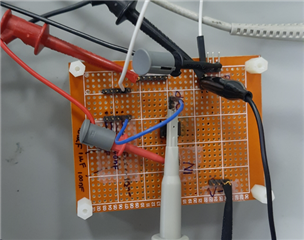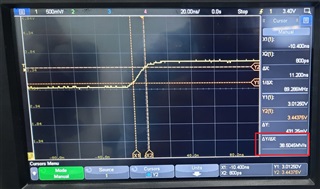Dear Team,
I am using BUF634 for my application.For testing I made a proto board(Hand soldering).Board is given below.

I am proving a supply of +15V and -15V and decap of 10uF is provided.
My input is a square waveform with a DC offset and a frequency of 33Khz.Please see the I/P pic below.
At the ouput of the Buffer a 10pF capacitor is connected.When I observed the waveform at the output I can see glitching at the both rising and falling edge.
May I know why it is occuring.
Please see the images below.

Regards
HARI



